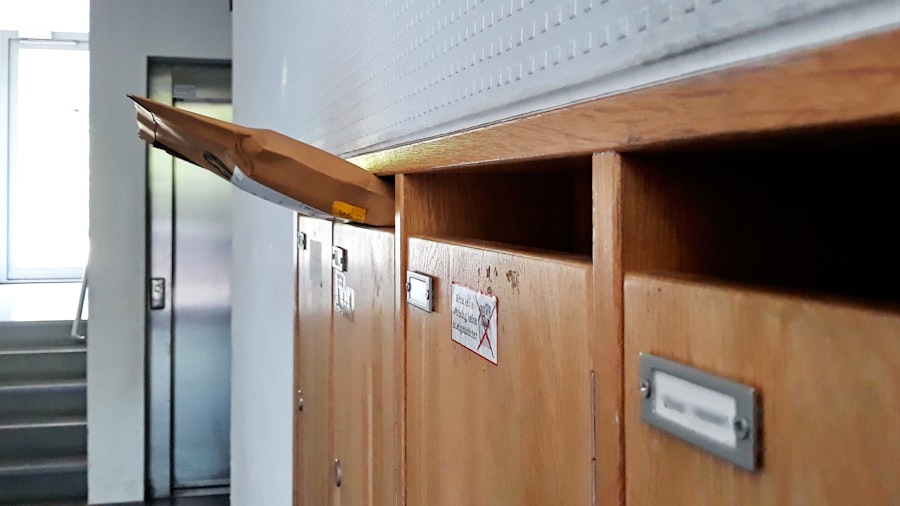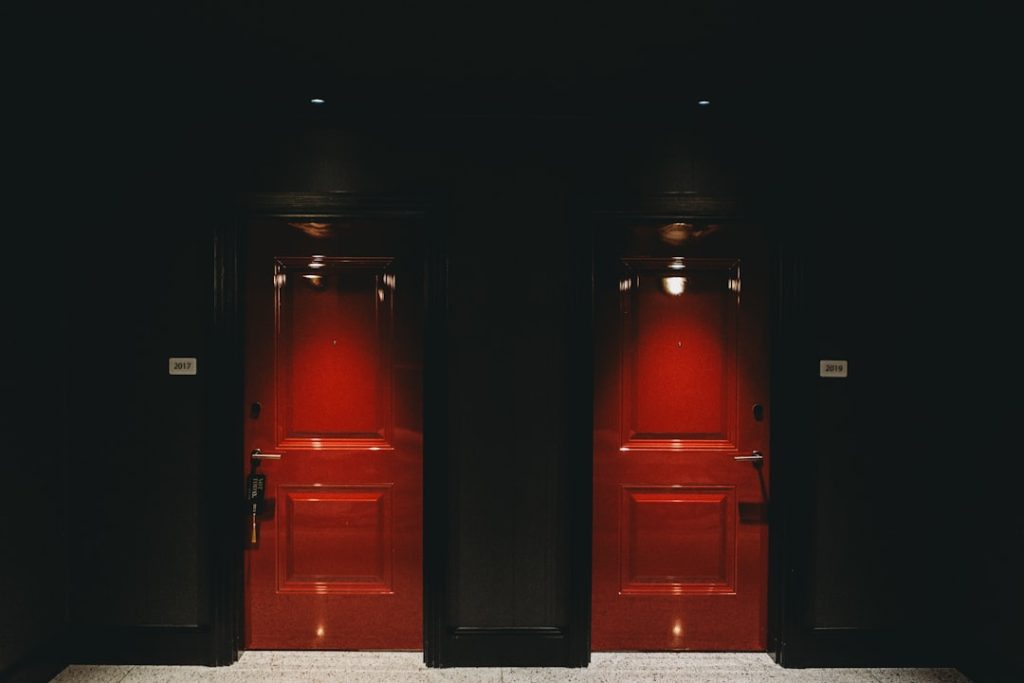The first step in optimizing your closet is to gain a comprehensive understanding of the space you have available. Closets come in various shapes and sizes, from walk-in closets that can accommodate an entire wardrobe to smaller reach-in closets that require more strategic organization. Assessing the dimensions of your closet is crucial; measure the height, width, and depth to determine how much room you have for cabinets and other storage solutions.
Consider the layout as well—are there any obstructions like doors or windows that could affect your design? By taking stock of these elements, you can create a functional plan that maximizes every inch of your closet. Once you have a clear picture of your closet’s dimensions, think about how you currently use the space.
Are there items that are frequently used but difficult to access? Do you find yourself struggling to find specific clothing or accessories? Understanding your habits and needs will guide you in selecting the right cabinets and organizing systems.
For instance, if you often wear certain outfits for work or special occasions, placing those items at eye level in easily accessible cabinets can save time and reduce frustration. Additionally, consider the types of items you need to store—clothing, shoes, accessories, or even seasonal items—and how they can be best organized within your available space.
Key Takeaways
- Understanding your closet space is essential for maximizing storage and organization.
- Choosing the right cabinets for your closet can make a significant difference in functionality and aesthetics.
- Utilizing vertical space with cabinets can help maximize storage in a small closet.
- Organizing your clothing and accessories with cabinets can streamline your daily routine and make getting dressed easier.
- Incorporating drawers and shelves for smaller items can help keep your closet clutter-free and organized.
Choosing the Right Cabinets for Your Closet
Selecting the right cabinets for your closet is a pivotal decision that can significantly impact both functionality and aesthetics. When choosing cabinets, consider materials that not only match your personal style but also withstand daily use. Solid wood cabinets offer durability and a classic look, while laminate options can provide a more modern appearance at a lower price point.
Additionally, think about the finish; lighter colors can make a small space feel larger, while darker hues can add warmth and sophistication. Another important factor is the style of the cabinets themselves. Sliding doors can save space in tighter areas, while open shelving provides easy access to frequently used items.
If you have a larger closet, consider incorporating a mix of both styles to create visual interest and functionality. For example, upper cabinets with doors can conceal less frequently used items, while open shelves can display shoes or handbags as decorative elements. Ultimately, the right cabinets should reflect your personal taste while also serving practical purposes.
Utilizing Vertical Space with Cabinets

One of the most effective ways to maximize closet storage is by utilizing vertical space. Many people overlook the potential of their closet’s height, but installing tall cabinets can significantly increase storage capacity without taking up additional floor space. By extending cabinets all the way to the ceiling, you can create additional storage for seasonal items or less frequently used belongings.
This approach not only makes use of otherwise wasted space but also draws the eye upward, making the room feel larger. Incorporating vertical storage solutions can also involve using adjustable shelving within cabinets. This flexibility allows you to customize the height of each shelf based on your specific needs.
For instance, if you have tall boots or oversized bags, you can create a dedicated section with ample height to accommodate these items. Additionally, consider adding hooks or pegboards on the inside of cabinet doors for accessories like belts or scarves. This not only keeps them organized but also frees up shelf space for other items.
Organizing Your Clothing and Accessories with Cabinets
| Types of Cabinets | Benefits |
|---|---|
| Wardrobe Cabinets | Provide ample space for hanging clothes and storing accessories |
| Shoe Cabinets | Keep shoes organized and easily accessible |
| Drawer Cabinets | Perfect for storing folded clothes, socks, and undergarments |
| Jewelry Cabinets | Helps to keep jewelry untangled and in one place |
Once you’ve selected and installed your cabinets, it’s time to focus on organizing your clothing and accessories effectively. Start by categorizing your items—group similar pieces together such as work attire, casual wear, and formal outfits. This method not only simplifies finding what you need but also helps you visualize your wardrobe as a whole.
Within each category, consider organizing by color or season to create a visually appealing arrangement that makes it easy to coordinate outfits. Utilizing drawer dividers within cabinets can further enhance organization by keeping smaller items like socks, ties, or jewelry neatly separated. This prevents clutter and allows for quick access when you’re getting dressed.
Additionally, consider using clear bins or labeled boxes on shelves for items that are less frequently used, such as off-season clothing or special occasion accessories. This layered approach ensures that everything has its place while maintaining an orderly appearance.
Incorporating Drawers and Shelves for Smaller Items
Incorporating drawers and shelves into your closet design is essential for managing smaller items that can easily become lost in larger spaces. Drawers provide a hidden storage solution that keeps delicate items like lingerie or accessories out of sight while still being easily accessible. When selecting drawers, consider options with soft-close mechanisms to prevent slamming and ensure longevity.
Additionally, shallow drawers are ideal for smaller items like jewelry or watches, allowing you to keep everything organized without overwhelming the space. Shelves are equally important for displaying and storing smaller items such as shoes or handbags. Open shelving allows you to showcase your collection while keeping it organized and visible.
To prevent dust accumulation on shoes or accessories displayed on shelves, consider using clear boxes or dust bags for protection. This not only keeps them clean but also adds an element of sophistication to your closet design. By thoughtfully incorporating drawers and shelves into your cabinet system, you create a versatile storage solution that caters to all types of items.
Maximizing Storage with Customized Cabinet Features

Customized cabinet features can take your closet organization to the next level by tailoring solutions specifically to your needs. Many companies offer modular systems that allow you to design cabinets with unique configurations based on your wardrobe requirements. For instance, if you have an extensive shoe collection, consider adding pull-out shoe racks that make it easy to see all your options at a glance without having to dig through piles.
Another popular customization option is built-in lighting within cabinets. LED lights can illuminate dark corners and highlight specific areas of your closet, making it easier to find what you’re looking for while adding a touch of luxury. Additionally, consider incorporating pull-out hampers or laundry baskets within your cabinet design for added convenience when it comes time to do laundry.
These features not only enhance functionality but also contribute to a more streamlined and enjoyable closet experience.
Maintaining and Upkeeping Your Closet Cabinets
Maintaining your closet cabinets is essential for ensuring their longevity and keeping your space looking its best. Regular cleaning is key; dusting surfaces and wiping down shelves with a gentle cleaner will prevent buildup and keep everything fresh. Pay special attention to areas that may accumulate dust or dirt over time, such as the tops of cabinets or behind drawers.
A simple routine of cleaning every few months can make a significant difference in preserving the appearance of your cabinets. In addition to cleaning, it’s important to periodically reassess the organization within your cabinets. As seasons change or your wardrobe evolves, certain items may no longer be needed or may require different storage solutions.
Take time every few months to evaluate what you have stored away—donate or discard items that no longer serve a purpose in your life. This practice not only keeps your closet organized but also allows you to make room for new pieces that better reflect your current style.
Tips for Keeping Your Closet Organized with Cabinets
To maintain an organized closet with cabinets over time, consider implementing a few simple strategies that promote ongoing tidiness. First, establish a habit of returning items to their designated places immediately after use. This prevents clutter from accumulating and ensures that everything remains organized in its proper spot.
Additionally, consider using matching hangers for clothing; this creates a cohesive look while maximizing space by preventing garments from slipping off. Another effective tip is to rotate seasonal clothing regularly. As seasons change, swap out heavier winter garments for lighter summer attire in an organized manner within your cabinets.
This not only keeps your closet looking neat but also makes it easier to access clothing appropriate for the current weather conditions. Finally, take advantage of labels on bins or boxes within your cabinets; clear labeling helps everyone in the household know where things belong and encourages accountability in maintaining organization. By understanding your closet space and making informed decisions about cabinet selection and organization strategies, you can create a functional and aesthetically pleasing environment that enhances your daily routine.
The right combination of vertical storage solutions, customized features, and ongoing maintenance will ensure that your closet remains an organized haven for years to come.



